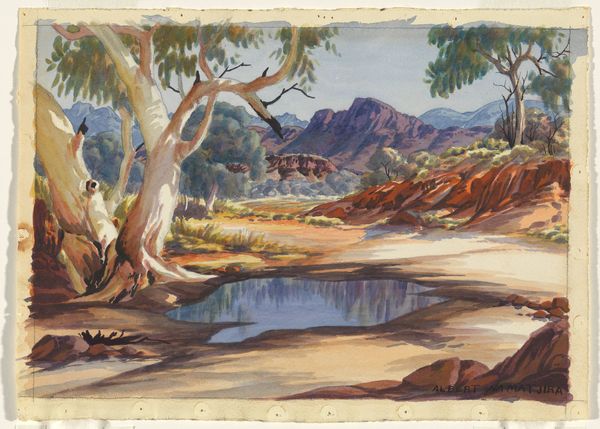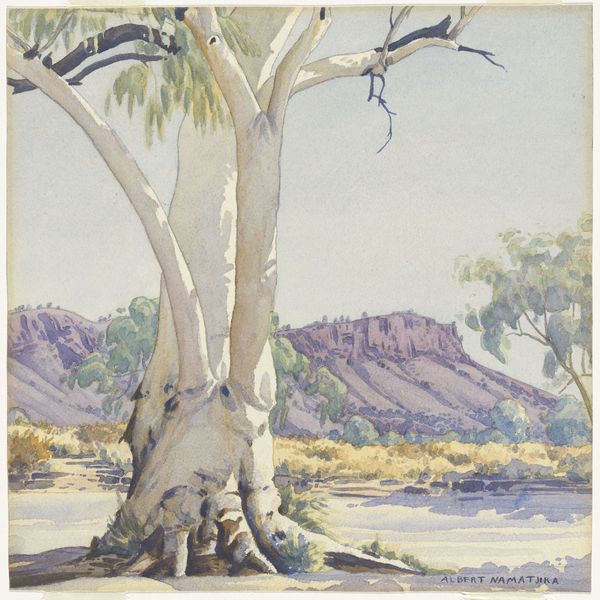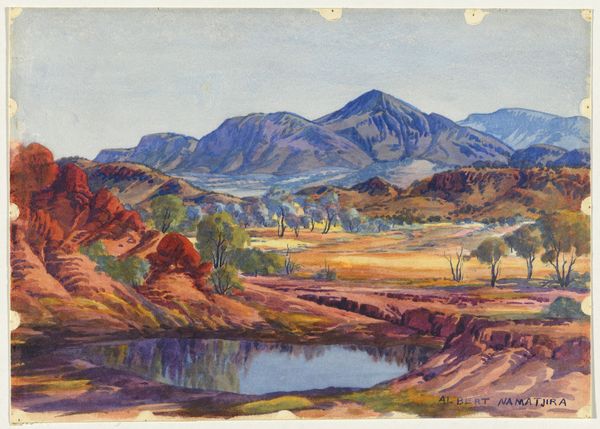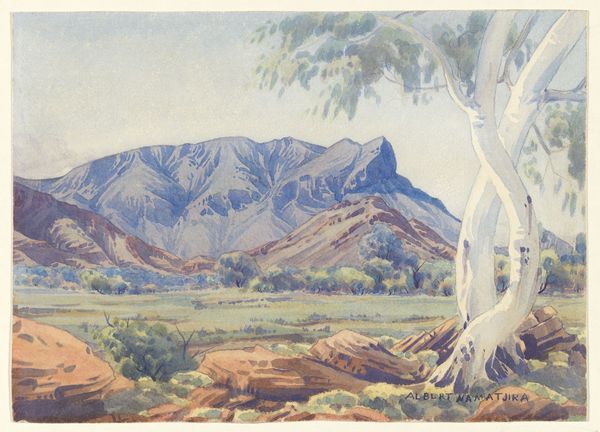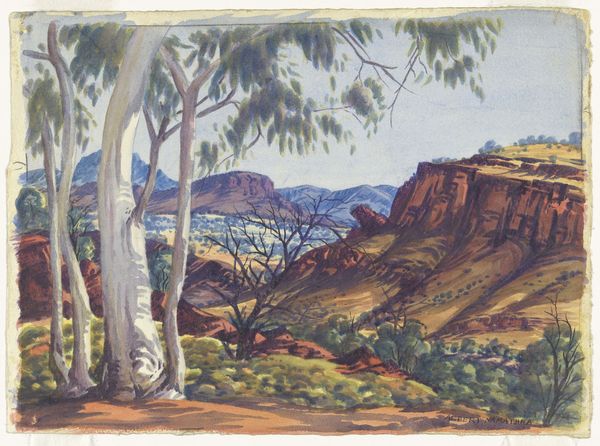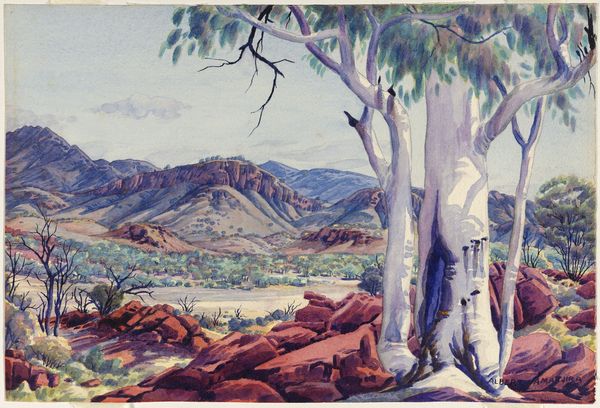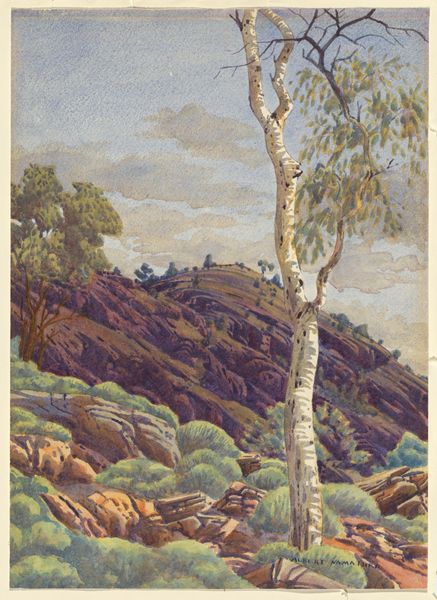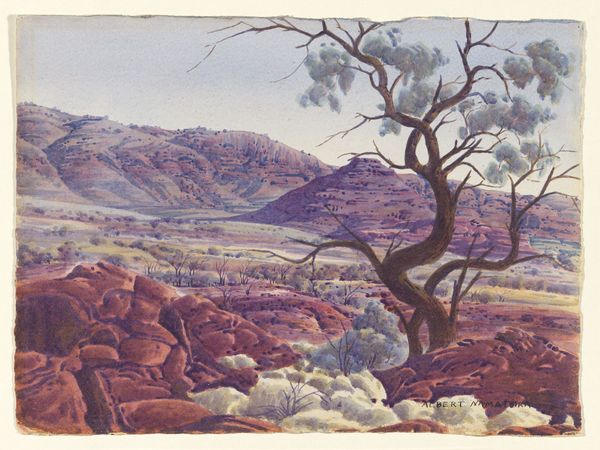
plein-air, watercolor
#
plein-air
#
landscape
#
figuration
#
watercolor
#
watercolor
#
realism
Copyright: Albert Namatjira,Fair Use
Curator: Albert Namatjira’s watercolor, "Ghost Gum and Waterhole, Central Australia," painted in 1955, offers a window into the artist's profound connection to his ancestral lands. Editor: It’s breathtaking. There’s a stillness that washes over you, a kind of quiet strength in the colors and composition. I'm struck by the pale, almost luminous ghost gum contrasted against the rusty reds of the landscape. Curator: Namatjira's works achieved enormous popular success, and yet that success needs to be considered against the backdrop of colonial policies and their impact on Aboriginal Australians. While celebrated, he was often treated as an exception rather than acknowledged as part of a larger artistic movement. Editor: Exactly. I think the Western gaze often exoticized his work, overlooking the complexities of his cultural position. It is so important to remember that his artistic journey took place within the confines of systemic constraints and injustices. Looking closely, the "realism" of his paintings needs unpacking, because the landscape is being translated through Namatjira's experience. What stories do you think are embedded in this depiction of the waterhole? Curator: Well, the waterhole is both visually and symbolically central. Water is life, of course, and in such a landscape, it becomes a site of survival, of community. We have to consider what that meant at this time, remembering this period of assimilation policies—when traditional custodianship of water sources were ignored or even actively undermined by colonial authorities. Namatjira is asserting his belonging, even resistance, through these depictions of place. Editor: Yes, it's more than just a pretty scene. By foregrounding the gum tree and the waterhole, he reclaims and reasserts Indigenous presence in a visual language accessible to a wider audience. I see the painting as a defiant act. Do you think the framing by the ghost gum creates an intimate viewing experience? Curator: Certainly, the trees act almost like guardians, inviting the viewer into a deeper appreciation of the landscape. This work allows us to meditate on Australia's natural beauty. Editor: A beauty charged with the weight of history and the enduring strength of Indigenous culture. I can feel Namatjira's respect. Curator: The artwork remains relevant as it asks us to reassess our relationship with the environment and the rights of First Nations people. Editor: Ultimately, this is about respecting the complex cultural layers embedded within a place. And to see the beauty, we need to look beyond the picturesque.
Comments
No comments
Be the first to comment and join the conversation on the ultimate creative platform.

